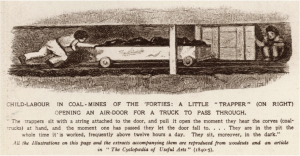 If you spend any time driving around rural Norfolk you are bound to come across a number of Victorian school buildings. Some will have been converted into pretty homes, with roses growing up their redbrick walls, while others still serve their original purpose. They were built in the last quarter of the nineteenth century in the years following the Elementary Education Act of 1870, which made it obligatory for parishes to provide a basic level of schooling for all their children between the ages of five and thirteen.
If you spend any time driving around rural Norfolk you are bound to come across a number of Victorian school buildings. Some will have been converted into pretty homes, with roses growing up their redbrick walls, while others still serve their original purpose. They were built in the last quarter of the nineteenth century in the years following the Elementary Education Act of 1870, which made it obligatory for parishes to provide a basic level of schooling for all their children between the ages of five and thirteen.
The urge for reform had been growing rapidly since the 1830s led by a small number of social reformers appalled by the working conditions of children employed to work down mines, up chimneys, and in factories. The legislation they forced through Parliament (often in the face of intransigent opposition) transformed the lives of millions and changed forever our perception of childhood.
Nowadays, many of these tiny schools have a mobile or two parked round the back. It was in one of these too-hot-in-the-summer-too-cold-in-the-winter demountables that I first used this context. It was with a Year 5/6 class of mixed academic development and diverse interests. Some knew a great deal about Victorian Britain, others had almost no knowledge of the subject at all.
The Mantle of the Expert context I planned for them had the following elements:
Curriculum: Social Reformers of Victorian Britain
Expert Team: A Pit Investigation Team
Client: Earl of Shaftesbury
Commission: To carry out a full inspection of the mines, discover the working conditions of the children working there, and to report back to Parliament with their findings.
My aim was to create a way into the context that would help the students develop an emotional link with the past and give them an understanding of the subject. Although I knew there was plenty to attract them, I couldn’t be sure their interest would develop into anything more significant than a passing concern since deeper levels of engagement need an emotional commitment to the work. For this reason in the early stages it was essential to pay careful attention to their levels of engagement – to listen to their ideas, watch their comfort levels, and, when necessary, make small adjustments to the planning. Going too fast would have left them behind, while going too slow would see them lose interest and go looking for other things to do.
